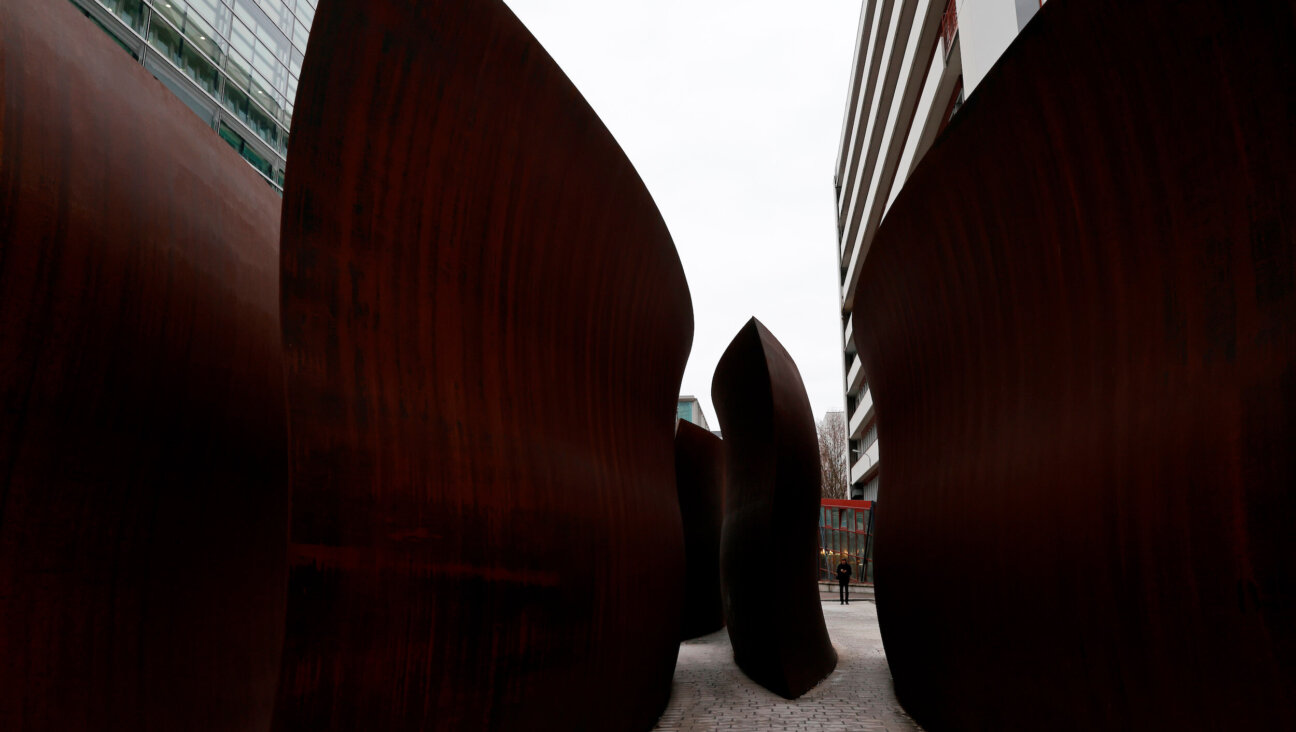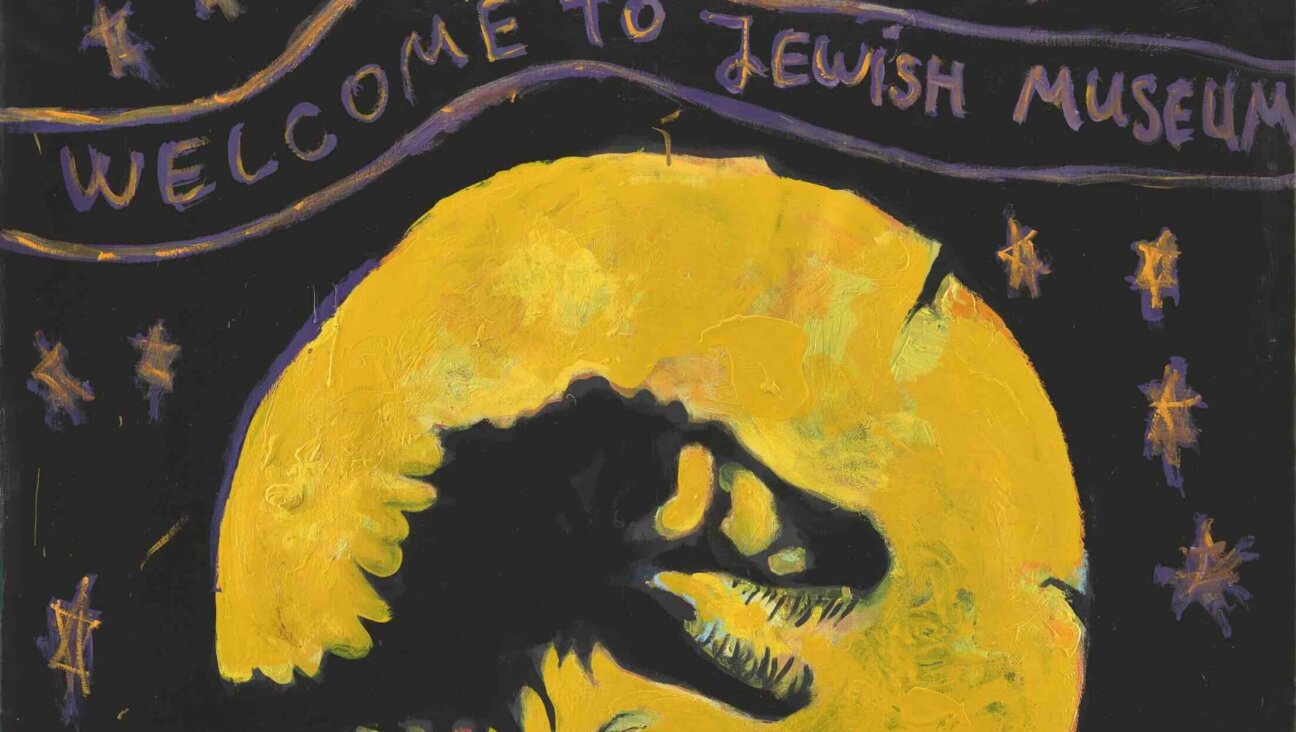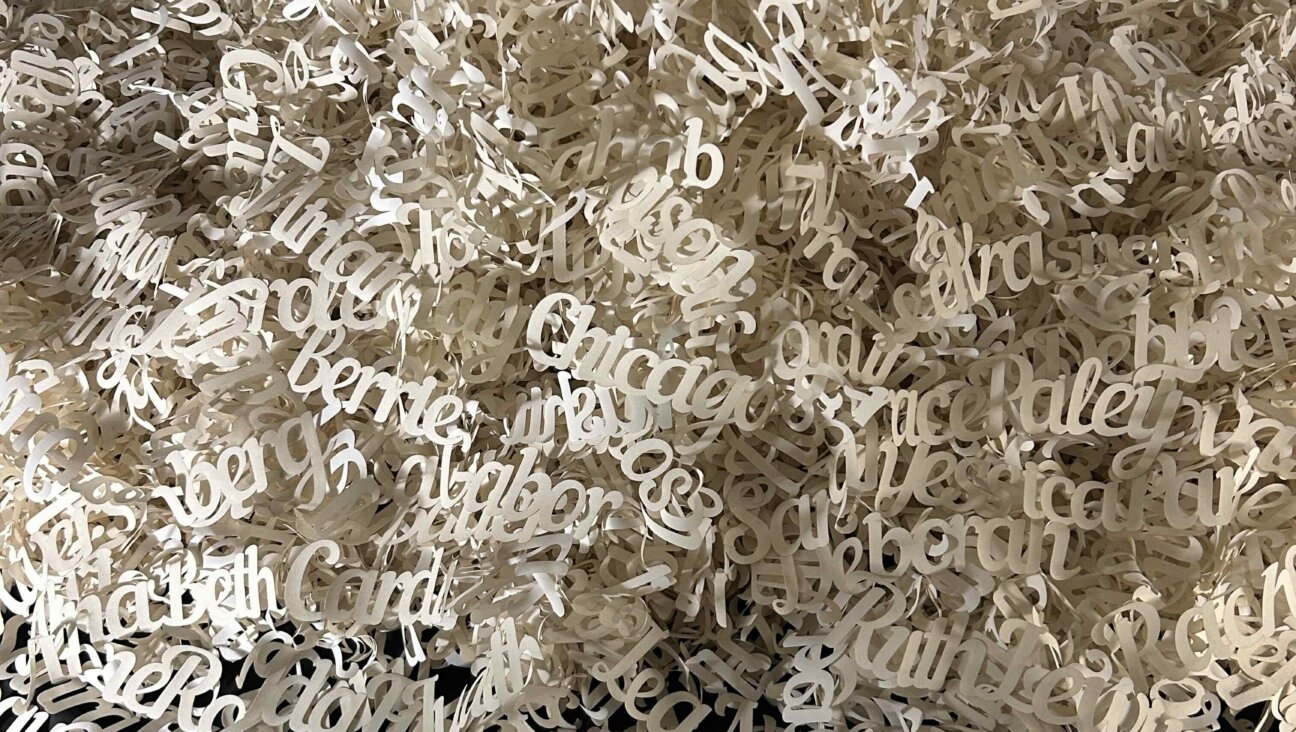The Not So Avant-Garde Art of Harold Garde

Image by Courtesy of Orlando Museum of Art
If Harold Garde, a painter who lives in Maine and Florida, wasn’t a nonagenarian, the framework of his exhibit at the Orlando Museum of Art might scare him. The first room of “Harold Garde: Mid-Century to This Century” contains Abstract Expressionist works from the 1950s-70s, while the second room features the more figurative paintings that he’s created since 2000. The implication, of course, is that the juxtaposition is supposed to speak volumes about works that may be separated by half a century.
At 92, Garde can be more “self-indulgent” about making art, he told me during a phone interview, and he doesn’t pressure himself to make new work that will compete with his early paintings. “I have a large inventory. And the work I do goes on the pile,” he says. “I’m not as concerned with career-building.”
When OMA curator Hansen Mulford proposed the exhibit, Garde said he was surprised. “I’m much better known for my figurative things,” he says, adding that he had hoped the show would have been called “Mid-Century and This Century,” rather than “to This Century.” He’s pleased that the exhibit presents an argument rather than a survey.
“It became a critical statement about my work that said, ‘This isn’t showing everything. It isn’t the whole of what Harold Garde does. There’s a continuity. You see the earlier work. Now you see the recent work and the same non-figurative patterns that dominate. It also points out that I really am a formalist. I’m very concerned with the structure of painting; what makes a painting; and what it should be or what it might be.”
Garde was born in New York City in 1923 and trained at the University of Wyoming on the GI Bill after serving in the Army for three years. Having previously studied science at what was then called College of the City of New York (later CUNY), he subsequently earned a graduate degree in fine arts from Columbia University. Looking back after many years on his upbringing, he says, “I’m still a New York Jewish kid.”
“Yiddish was probably my first language,” he said. His immigrant parents passed along their respect for the arts. (His father worked in a factory; his mom raised him.) “The Jews were identified with the culture of New York when I was growing up,” Garde says. “My father would say, ‘I think Rembrandt must have been a Jew.’” If Garde’s dad thought a movie was particularly good, he’d quickly decide the leading actress was Jewish. “I’d say, ‘Dad, Rita Hayworth is not Jewish,’” Garde says. His father didn’t miss a beat. “If she was, would she tell anybody?”
Garde’s father once told him he had to marry a Jew. “Why was that so necessary?” Garde asked at the time. “He said, ‘That would be a terrible mistake,’” Garde says. “Anything that would go wrong, the first thing she’d say is, ‘You’re a Jewish bastard. No wonder you’re causing trouble.’”
Neither the young Garde nor any of his contemporaries dreamt of becoming professional artists. “Nobody that I knew as a kid had even the slightest sense that you could earn your living as a painter,” he says.
Asked if he ever worries about being pigeonholed as a Jewish artist, Garde says he was happy to show his work at the Maine Jewish Museum in 2013. “I was so thrilled and pleased that in Maine there’s a Jewish museum,” he says. “I want the people around me, who admire my work, to be perfectly comfortable with the idea that they can like my work and that I’m Jewish,” he says.
‘Harold Garde: Mid-Century to This Century’ runs at the Orlando Museum of Art through January 3, 2016.
Menachem Wecker is co-author of “Consider No Evil” (Cascade Books, 2014).

I hope you appreciated this article. Before you go, I’d like to ask you to please support the Forward’s award-winning journalism this Passover.
In this age of misinformation, our work is needed like never before. We report on the news that matters most to American Jews, driven by truth, not ideology.
At a time when newsrooms are closing or cutting back, the Forward has removed its paywall. That means for the first time in our 126-year history, Forward journalism is free to everyone, everywhere. With an ongoing war, rising antisemitism, and a flood of disinformation that may affect the upcoming election, we believe that free and open access to Jewish journalism is imperative.
Readers like you make it all possible. Right now, we’re in the middle of our Passover Pledge Drive and we need 500 people to step up and make a gift to sustain our trustworthy, independent journalism.
Make a gift of any size and become a Forward member today. You’ll support our mission to tell the American Jewish story fully and fairly.
— Rachel Fishman Feddersen, Publisher and CEO
Join our mission to tell the Jewish story fully and fairly.
Our Goal: 500 gifts during our Passover Pledge Drive!
























